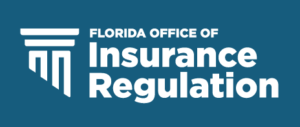Separating fact from sensationalism
 If you haven’t read the February 22 article from the Tampa Bay Times, it’s worth reviewing. Titled Florida insurance companies steered money to investors while claiming losses, study says, the article presents a narrative that suggests Florida property insurers were shifting billions to Managing General Agents (MGAs) and affiliates while citing hurricane-related losses from 2017-2019. The story is based on a summary of a draft report prepared for the Florida Office of Insurance Regulation (OIR) nearly three years ago.
If you haven’t read the February 22 article from the Tampa Bay Times, it’s worth reviewing. Titled Florida insurance companies steered money to investors while claiming losses, study says, the article presents a narrative that suggests Florida property insurers were shifting billions to Managing General Agents (MGAs) and affiliates while citing hurricane-related losses from 2017-2019. The story is based on a summary of a draft report prepared for the Florida Office of Insurance Regulation (OIR) nearly three years ago.
As the saying goes, “context is everything.” A closer examination reveals that the Times piece omits key details that significantly alter the story’s implications. Notably, OIR itself has since clarified its position in a March 5 Realtor.com article:
“The report does not clearly show where the capital was spent or conclude that all the monies were profit. The report does say additional oversight was needed, to which OIR has and continues to advocate for more regulatory control over MGAs.”
The Realtor.com article further explains that the report was drafted before OIR gained additional authority over MGA and affiliate fee structures in 2022. Since then, OIR said it has modified or canceled multiple MGA agreements, reinforcing that the situation was already being addressed − long before the Times article attempted to frame it as an unchecked issue.
Interestingly, the Times itself acknowledged this in a brief mention within its March 5 follow-up story:
“The Office of Insurance Regulation said the report was incomplete but showed that reforms to affiliate companies it has made were justified.”
Yet, this critical context was buried − rather than incorporated into the initial framing of the story.
For those interested in a fact-based breakdown of the Times article and the full scope of the OIR report, we encourage you to review our detailed Analysis of Tampa Bay Times’ Reporting on Florida Insurance Profits. It provides a point-by-point examination of the claims made and the realities behind them.
For journalists, this analysis serves as a resource for accurate reporting. For those in the insurance industry, it provides clarity to help explain the issue to customers and stakeholders. As always, I’m happy to answer any questions.

